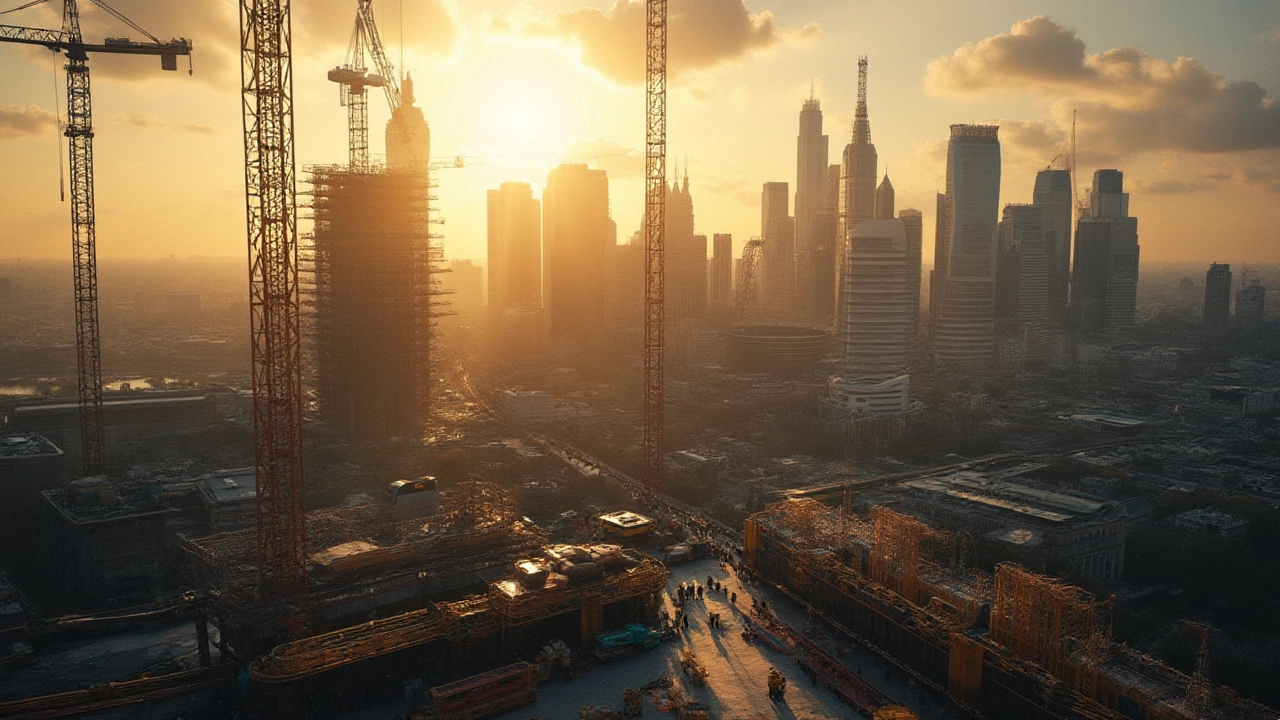Picture a single construction company worth more than the GDP of some small countries. That’s the world we live in—where mega-contractors wield budgets big enough to buy fleets of jets, change skylines, and even shift how nations are built. When people ask, “What’s the most valuable construction company?” they're really asking: Who leads this high-stakes, earth-moving, skyline-rising game?
The Biggest Names: Who Actually Tops the List?
The heavyweight title for the most valuable construction company in the world almost always points to China State Construction Engineering Corporation (CSCEC). If you look at 2024 reports, CSCEC boasts eye-popping revenues that soar past $300 billion—yes, with a “b”—making it not only the top in construction but also a regular on Forbes Global 500. How does a company get so enormous? CSCEC is behind massive infrastructure, housing, highways, and landmark city projects in, and increasingly outside, China. Their workforce? North of 370,000 employees. Their influence? Practically everywhere infrastructure touches daily life in Asia and Africa.
Other mega players chase at their heels: China Railway Group and China Railway Construction Corp, both based in China as well, with hundreds of billions in annual revenue. Not to miss, European giants like VINCI (France) and ACS Group (Spain), even though their revenues and profit margins are dwarfed by the biggest Asian firms. In the US, Bechtel leads the pack but doesn’t crack the global top five by revenue.
The dominance of Chinese construction isn’t just about scale. They win bids with speed and efficiency, push innovation in modular building, and work closely with government development programs. One look at the world’s tallest bridges or longest high-speed rails, there’s a good chance a Chinese firm had a hand in it.
Let’s check out some hard numbers. Here’s a table based on the most recent 2024 revenue stats:
| Rank | Company | Country | Revenue (US$ Billion) |
|---|---|---|---|
| 1 | China State Construction Engineering Corp. (CSCEC) | China | 331 |
| 2 | China Railway Group | China | 196 |
| 3 | China Railway Construction Corp (CRCC) | China | 178 |
| 4 | Vinci | France | 68 |
| 5 | ACS Group | Spain | 46 |
| 6 | Bechtel | USA | 21 |
Just look at those revenue gaps—the Chinese giants play a different game. As
"The ascent of Chinese construction firms is not a fluke; it's the result of decades of investment and policy support," says John Walton, editor at The Construction Index.That quote says it all.
How Do They Get So Big? The Secrets Behind Their Value
Want to know the secret sauce behind these mega-firms? It’s not just size or government contracts. For CSCEC and its peers, strategy revolves around relentless global expansion, bold investments in tech, and—critically—tapping government-backed mega projects at home and abroad.
In places like Southeast Asia, Africa, and even parts of Europe, CSCEC and Chinese railway giants win enormous deals to build airports, dams, railways, and stadiums. Why do governments turn to them? The answer’s simple: they deliver fast, offer bundled finance, and take on projects many Western companies pass up due to risk or scale.
Tech plays a part, too. Before you yawn, think about this: CSCEC uses AI-powered project management, offsite modular building, and advanced green tech to slash project times and cut waste. Imagine 40-story towers built at the rate of three floors per week. It sounds futuristic, but in China’s biggest cities, it’s happening now.
It’s not just government gigastructures. These companies diversify into property development, engineering consultancy, facility management, and infrastructure operation. So while construction gets the spotlight, their bottom lines swell with revenue from managing finished buildings, highways, and even power plants over decades.
Western firms take a more traditional approach—bidding for high-profile contracts on infrastructure, energy, or commercial development. Think Bechtel with U.S. highways or Balfour Beatty shaping London’s skyline. But often, they have to contend with stricter regulation, less government backing, and hostile markets abroad. Funding is a bigger challenge, and profit margins tend to be tighter than the massive Chinese conglomerates.

What Sets the Industry Leaders Apart?
It isn’t just how much steel or concrete these companies pour—it’s their ability to win contracts, manage risks, and predict what clients need before they even know. Take VINCI (France), one of Europe’s two big giants. Besides airports and highways, they’re known for public-private partnerships, running bridges and roads after building them, and pioneering sustainable designs. Their annual revenue might “only” be $68 billion, but their reach is global.
The US heavyweights, like Bechtel, make headlines with high-impact projects: think Hoover Dam rehab, Crossrail tunnels, or massive LNG export facilities. Their focus is often on complex, technical builds rather than raw scale. Bechtel’s family ownership frees it from the pressure of quarterly reports but limits its access to capital compared to publicly traded Asian giants. ACS Group from Spain, meanwhile, champions rapid expansion into Latin America and North America, scooping up firms like Turner Construction to boost its growth and overseas reach.
Transparency, tech adoption, environmental practices—these things matter more each year. Big names face increasing scrutiny from governments, clients, and even their own investors. The biggest players are the ones who can move fast, adapt, and keep ahead of industry trends.
Here are a few tips if you’re eyeing the field:
- If you’re investing, watch for companies diversifying into new markets like renewables and smart infrastructure.
- For job hunters, the giants offer international careers, fast learning, and the chance to build the world’s next big thing—but expect high expectations and intense pace.
- Developers and clients, if you need things done fast and at scale, Asian firms often top the shortlist—but local players may bring better cultural fit and less red tape.
Trends, Takeaways, and Where the Value Is Headed
The future? Expect the top dogs to get even bigger. The urbanization rush in Africa, India, and Southeast Asia is just heating up. The need for resilient infrastructure—flood defenses, climate-proof buildings, smarter transport—is shooting through the roof. Chinese companies, with their legions of talent and government backup, are poised to snatch up even more global contracts.
That doesn’t mean Western and Japanese firms are out. They are pivoting into advanced engineering, renewables, and ultra-high-tech projects that need innovation more than raw manpower. In fact, some U.S. and European companies are forming joint ventures with Asian giants just to stay in the race.
One interesting twist: rising focus on sustainability. Companies that can pull off carbon-neutral builds, use recycled materials, and deliver smart cities will surge in value. For example, VINCI and Skanska have pumped billions into eco-friendly design and build processes, trying to reinvent what a "valuable" construction company means. Watch for this trend to only get stronger.
If you want a single name for the biggest, most valuable construction force today, it’s China State Construction Engineering Corporation. But the game is changing fast. The world’s demand for buildings, energy, and infrastructure is about to explode. And the next decade could see some big upsets as everyone races to build smarter, cleaner, and with more style—making this industry something you’ll want to keep your eye on.
